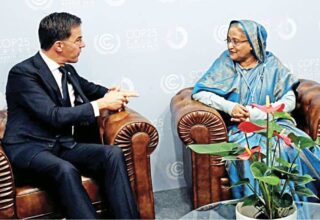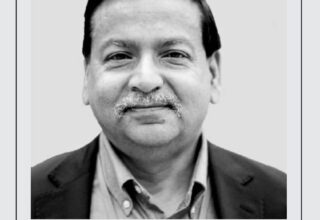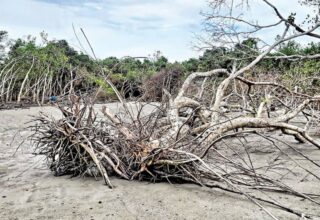State of climate change discourse in the United States

I have just returned from a three-week lecture tour of universities in the United States which took me to New York (Columbia University), Washington, DC (George Washington University), Maryland (University of Maryland) and Nashville (Vanderbilt University). I also participated in the weeklong annual Resilience Academy at the Woodrow Wilson Centre and gave a talk at the World Resources Institute in Washington, DC during which I met a number of scholars, funders, policymakers and practitioners from academia, foundations, the World Bank, USAID, the State Department, Environmental Protection Agency (EPA) as well as Congress.
I will share below my impression of the state of climate change discourse in the country, in light of the views expressed by different stakeholders at federal, state and local levels.
The first and most obvious point involves the non-acceptance of climate change by the president and his head of EPA, which has reached such a point that even the words “climate change” have become taboo in all federal websites and documents. We learned this the hard way as we had originally named our theme for this year’s Academy “Resilience to Climate Change”—but our hosts in Washington advised us to change it to “Enhancing Coastal Resilience to Extreme Weather Events” in light of the succession of hurricanes that had recently hit Texas, Florida and Puerto Rico. By doing so we were able to attract participants from all the federal agencies who might not have been able to attend a meeting on “climate change.” However, by making the name change and discussing more practical ways of addressing coastal resilience, it was indeed possible to hold very constructive discussions with a wide range of stakeholders on how to deal with such extreme weather events in future.
This leads to my second observation, which is that the people on the ground, who have to deal with such extreme events, particularly at the state and city levels, are quite pragmatic and willing to learn from other countries on what works best in tackling these problems. Hence, they were very open to learning lessons from other countries, including Bangladesh, as well as sharing their own lessons. This is because most sensible people in the US now accept that the succession of four category-four and -five hurricanes in the Atlantic and Caribbean in one season was indeed unprecedented, and was probably attributable to human-induced climate change having enhanced global atmospheric and ocean temperatures this year. They are, therefore, also willing to accept that these extreme events are likely to be more frequent in future and it makes sense to be better prepared for them.
The third stakeholder group with whom I spent some time were the students and faculty members of several universities where the atmosphere was refreshingly open to discussion of human-induced climate change as a reality and trying to find solutions through research on both mitigation and adaptation. It was also evident that this is taking place without much hindrance (although some academics did admit that they did not use the term “climate change” anymore when applying for federal research funds!).
There was also a general interest from several universities in developing collaborative research, especially on adaptation, with Bangladesh and in sending research students to study here for master’s and PhDs as well as taking students from Bangladesh. There was a special interest in trying to link top-down satellite-based big data collection in the US with more ground-reality based research in Bangladesh.
And finally, there were Bangladeshi expatriates in the US for whom climate change was not the issue; there was a heightened sense of anxiety due to the increase in anti-Muslim and anti-immigrant rhetoric amongst some Americans. While most of them were quite well-settled and doing well economically, some of them did admit to feeling more anxious, especially for young girls who wear hijab.
I will conclude with my impression of where things stand in the US with regard to climate change discourse and actions under President Trump. My impression is that despite his anti-climate change rhetoric, the people of the US, by and large, are taking a much more pragmatic approach with regard to the need to enhance resilience in the face of the increased frequency and magnitude of extreme weather events as well as investments in cleaner renewable energy rather than dirty fossil fuels. The latter is a purely market-driven, profit-making strategy, whereas investment in renewable energy, such as wind and solar, is creating more green jobs and making more profits than coal and other fossil fuels. Thus, despite the anti-climate change rhetoric of their president, the people of the US are indeed tackling climate change in their own way, even if they don’t call it that.
Originally this article was published on November 01, 2017 at Daily Star. The author Dr. Saleemul Huq is the director of the International Centre for Climate Change and Development (ICCCAD) at the Independent University, Bangladesh (IUB).
Email: saleemul.huq@icccad.net






